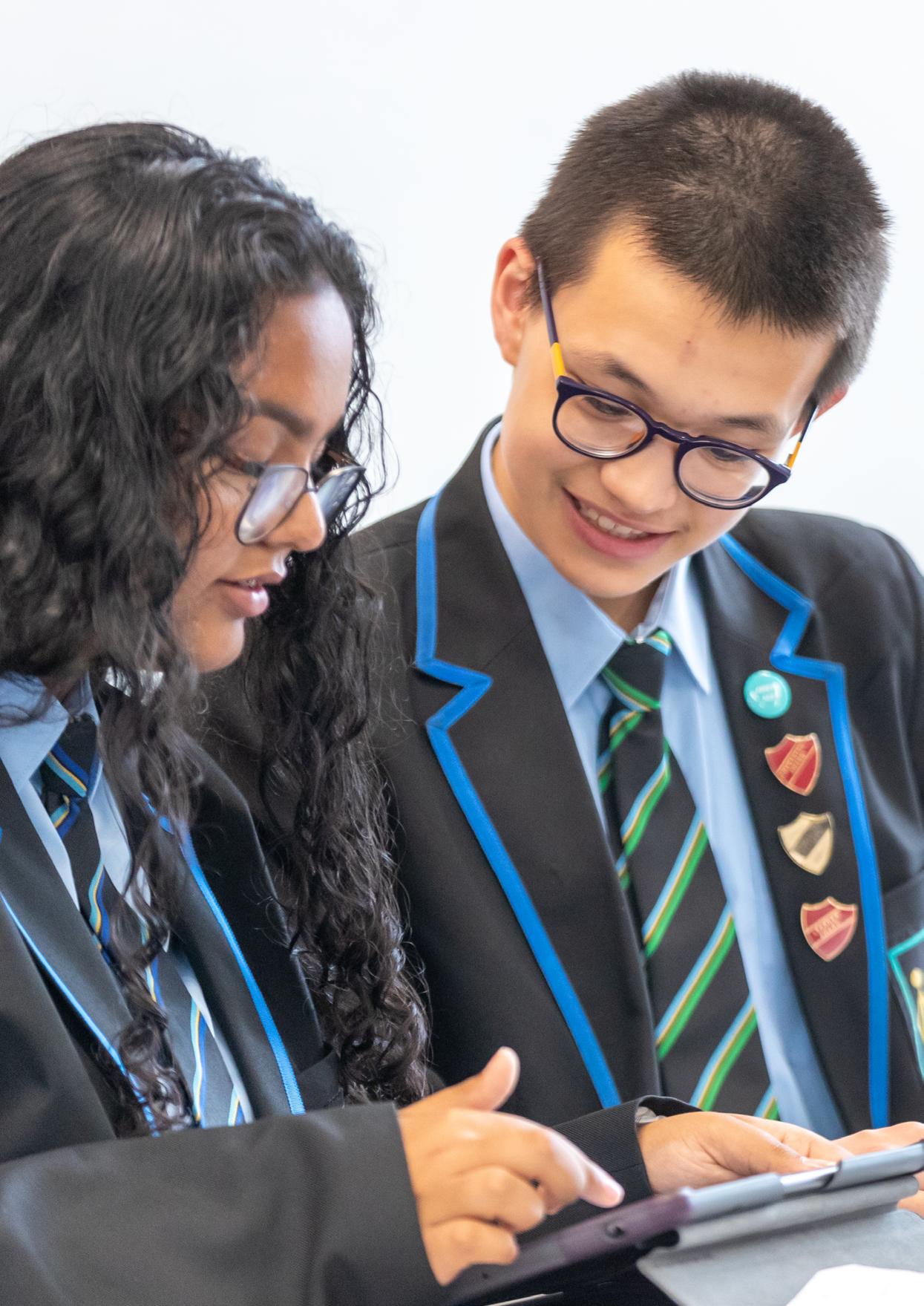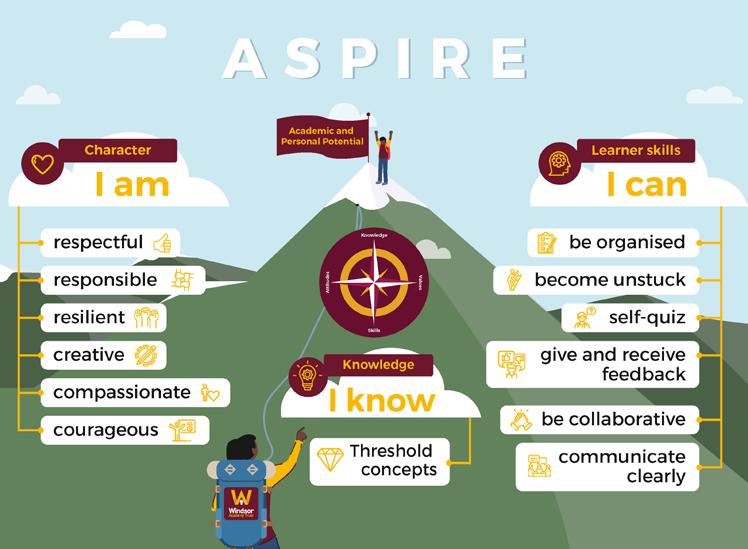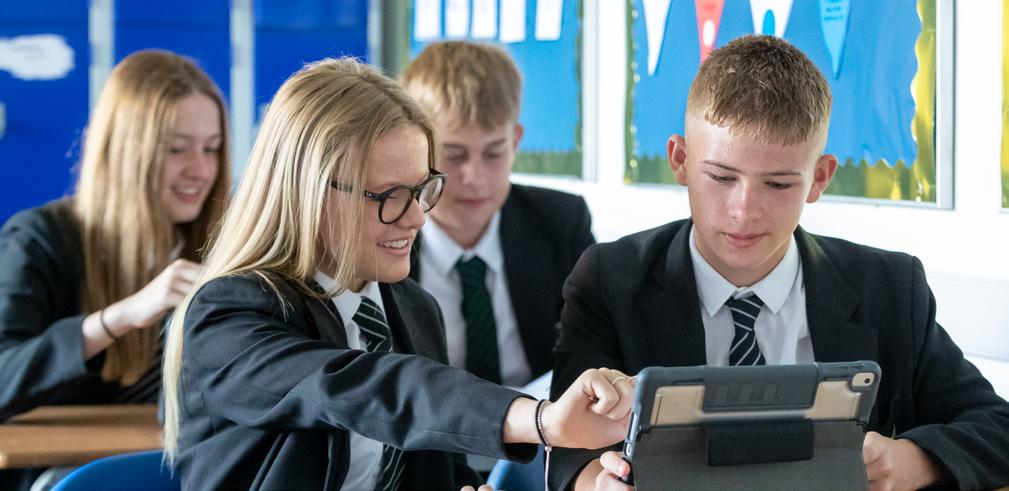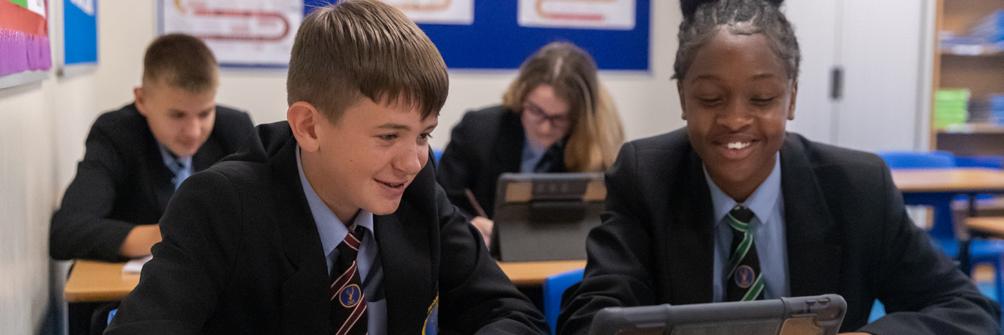The WAT Literature Review
The case for technology in schools has relatively limited research evidence (Diemer et al, 2013 cited in Geer 2017). Hattie’s metastudy indicates a use of technology providing moderate effect sizes 0.57 effect size for SEN and 0.55 effect size for other subjects (Hattie 2020). Yet, in a field where, due to rapid technological advances, research can quickly become outdated, the key findings around the importance of teacher relationships, teacher training, pedagogical theory and implementation remain consistent:
Implementation - Teacher Training:
Students were clear, they did not want to be taught by a ‘computer’—they valued the relationship they had with teachers who knew them and how they learn best; education reimagined must not be an agenda of students ‘learning on their own’, teacherstudent partnerships and school environments remain essential elements of a future focused learning model (Fullan 2020).
Poor implementation is a key reason that digital technology fails to meet its potential (EEF 2019). Across OECD countries, the least commonly implemented practices were: having a specific programme to promote collaboration amongst teachers on the use of digital devices (36%); having a scheduled time for teachers to meet to share, evaluate or develop instructional materials and approaches that use digital devices (44%); and having a written statement specifically about the use of digital devices for pedagogical purposes at school (46%) (Fullan 2019). Teachers require exposure to the range of pedagogical approaches that lend themselves
to iPad use so that they can critically analyse and ascertain the best approach for student learning (Henderson & Yeow, 2012), whilst Burden et al (2012) believe that greatest benefits are likely to be evidenced through experimental learning.
Implementation-Student Training:
Although iPads are intuitive tools, students do not necessarily know how to effectively use them for their own learning (Lam at al, 2011 cited in Geer 2017). Training and monitoring how technology is being used, including by checking that all learners have the skills they need to use it effectively, is likely to reduce the risk that technology becomes a tool that widens the gap between successful learners and their peers (Lewin 2019).
Pedagogical areas of merit:
There are a number of pedagogical areas that are referenced in the literature reviewed as successful uses of digital technology. These are Technology for Assessment, Technology for Collaboration, and Technology for Personalisation of Learning (differentiation).
a. Assessment for learning: Using technology can increase the accuracy of assessment, and speed of information collection, to inform teachers’ decision-making and reduce workload. It can be used to provide feedback directly to pupils via programmes, but in all cases careful implementation and monitoring are necessary. Feedback via technology is most beneficial if it supplements, but is aligned to, other forms of feedback (Lewin 2019). There are opportunities to solve ‘the abstraction
between what the teacher intends, and what the pupil understands’ e.g. by recording verbal feedback for pupils’ work with a more detailed explanation than written feedback would be able to provide (Lewin et al., 2019).
Technology can enable the use of e-portfolios to track holistic learning, an increase in self and peer assessment (Whitelock, 2010) and have been seen as a significant improvement over paper-based portfolios, in increased reflection and quicker feedback and collection of cumulative assessment data (Goodwin, 2012; Habler 2015). Whilst ‘Stealth assessment’, assessments embedded within learning, have been found to reduce test anxiety and be less disruptive to the flow of learning (Shute et al., 2010; Oldfield et al., 2012).
b. Personalisation of Learning: Tutoring programmes offer cost effective personalised support, and some claim to be able to accurately assess pupils’ understanding and provide adaptive content. Effective delivery requires teacher oversight, although teachers can supervise pupils practise, tracking learning processes more efficiently to other methods (Huang et al., 2012).
Personalisation of learning to support inclusion using 1:2:1 devices is possible via customisation of resources, for example, adjusting text size and audibility (Gasparini & Culén, 2012; Cumming et al., 2014; Dundar & Akcayir, 2012). By enabling learners to adapt resources to their individual needs academic confidence is improved (Gasparini & Culén, 2012; Miller et al., 2013).
c. Collaboration: Student collaboration is an area which improves participation and quality of participation (Ferrer et al.,2011, Heinrich, 2012, Ciampa, 2014) with wider implications for aspects of development such as oracy and exploratory group thinking. Studies show that improved communication and cooperation existed in groups using digital devices together towards a better standard of finished piece because of the scrutiny brought about through collaboration (Lin et al., 2012). Collaboration using digital devices may hold benefits for lower prior attaining students within groups through providing a role for all and therefore more acceptance of the usefulness of each (Cheng & Ku, 2009, Looi et al., 2009; Ciampa, 2015).
What have we done internally as a trust and what has been the impact?
An initial research study including teacher and student voice from across WAT was conducted to explore what 1:2:1 devices are being used for and why teachers have used devices in specific ways.
Key finding 1: Assessment for Learning.
Consistent use of AfL to increase responsiveness to learning is effective and motivating with benefits for accuracy of information for teachers and students and for teacher workload. Careful thinking around how this is balanced with other effective forms of AfL across the sequence of lessons is required. It has become the first area for development of all teachers’ skills in this area through CPL around self marking applications to create, collate and analyse effective learning checks.
Key finding 2: Personalisation of Learning. Personalisation of learning both in simple ways such as sharing lesson slides and more sophisticated ways in adaptive applications in mathematics is effective and considered most beneficial to learning by students. Students
are able to access both information and solutions to problems online to independently ‘become unstuck’. A consistent approach in organisation of work digitally has been implemented across schools to avoid split attention and effects of this on cognitive load.
Key finding 3: A Sense of Pride. A positive impact on student motivation through a sense of pride in producing more professional (grown up) work and an increased emotional connection to learning through personalising work to include something of ‘themselves’, e.g. recordings of themselves reading their own script or through uniqueness of information researched.This has supported the use of our ASPIRE e-portfolios to present work. Similarly, the use of richer and more relevant resources has shown benefits for student engagement with learning particularly in primary schools, science, music, art and history.
Key finding 4: Collaboration. An area which shows potential in wider studies and within which our digital innovators are exploring opportunities through applications such as Padlet and Jamboard to facilitate collaboration from all students. A developing and key area for learning.
Our 1:1 Digital Learning Strategy
Our 1:1 digital learning approach provides students in Years 4 to 10 with their own iPad to use in school and at home.
Taking place across all schools in the Windsor Academy Trust family, the initiative is part of our shared commitment to unlocking academic and personal potential.
1:1 digital learning is fully embedded into our curriculum to provide inspiring learning experiences that maximise learning and progress in and outside the classroom.
1:1 digital learning plays a critical role in increasing engagement in learning and encouraging creativity, collaboration and critical thinking. This provides students with essential digital skills and maximises their achievement and future success.
We launched 1:1 digital learning following extensive research that showed the impact of digital technology in education. Digital learning has been central in providing students with the best experiences. Due to its success and impact, 1:1 digital learning has been introduced to more year groups as the rollout continues.
Mapping Digital Technology to the Curriculum
It is important that digital technology is used appropriately to accelerate learning; facilitating opportunities that extend and go beyond established pedagogical approaches. Digital technology should not just be used as a substitute for existing, effective teaching and learning strategies with no added benefit to stakeholders. Therefore, the use of digital technology must be well-considered and mapped to the curriculum, modifying or redefining tasks and schemes of work as necessary.
To inform the planning for the application of digital technology in our classrooms, we have adopted the SAMR Model (Dr Ruben Puentedura); a framework that categorises four degrees of classroom technology integration.
The
SAMR
Model of Classroom Technology Integration (Dr. Ruben Puentedura)
Redefinition
Tech allows for the creation of new tasks, previously inconceivable
Modification
Tech allows for significant task redesign
Augmentation
Tech acts as a direct tool substitute, with functional improvement
Substitution
Tech acts as a direct tool substitute, with no functional change
Digital learning coaching and training is provided to support subject leaders and classteachers during the curriculum ‘powering up process’, exploiting the combined subject and digital learning knowledge of the collaborators to augment, modify and redefine existing schemes of work. The persistent, rapid development of technology in education demands the continual re-examination of practice and curriculum planning to ensure the most effective provision. The vision is to realise ambitions to always provide a world-class curriculum that maximises academic and personal potential through the exploitation of the latest digital learning technologies, facilitating highly-effective teaching and learning that could not be achieved without the use of the identified and mapped technologies (redefinition). Practical examples and further clarification of the SAMR model are available via these links:
WAT SAMR Model Training Materials
SAMR Model Explained with 15 Practical Examples (3P Learning)
SAMR Model: A Practical Guide (PowerSchool)
8 Examples of Transforming Lessons Through the SAMR Cycle (EmergingEdTech)
How to Apply the SAMR Model with Ruben Puentedura (YouTube)
Digital Technology in Learning
One of the key takeaways from Daisy Christodoulou’s new book Teachers vs Tech: The Case for an Ed Tech Revolution, is that teachers need to understand how knowledge shapes learning. If we don’t, we will overvalue discovery learning which presumes erroneously that teacher expertise and student background knowledge are relatively unimportant and we will immerse students in rich and unstructured technological environments without prepping them with background knowledge or the mediation of a teacher. Digital technology is not a silver bullet, but when it is combined with strong subject knowledge and pedagogical expertise, it will augment teacher effectiveness and accelerate learning.
Professional Learning
At Windsor Academy Trust, the goal is for every teacher in every classroom to be as good as they can be in what they teach (the curriculum) and how they teach it (pedagogy). The CST proposes that “there is no improvement for pupils without improvement in teaching, and no improvement in teaching without the best professional development.” We believe that digital technology is a powerful enabler and so we are committed to working alongside our leaders and teaching staff to support them with powering up their planning and their pedagogy to unlock the academic and personal potential of the young people across our family. Please find below some of the ways in which we are supporting our leaders and teaching staff:
Staff induction and ongoing professional learning: The journey starts with staff induction, delivered by our Digital Professional Learning Lead and continues with ongoing, bespoke CPL as required, to build staff expertise and confidence.
Digital Coaching: A continuous cycle of digital coaching collaborations with trust secondary subject and primary sector leaders is scheduled throughout each academic year. Curriculum plans are reviewed and digital learning powerups are proposed, trialled and, where successful,
shared with colleagues. See Secondary Example and Primary Example.
Staff Digital Learning Hub: A central onestop archive of digital learning solutions is available to all staff across the trust. Apps, cloud tools and websites that provide solutions to common, subject-specific learning scenarios are signposted. For each solution, teachers can access tutorials and guidance, extending their repertoire of digital learning skills and taking responsibility for their own digital learning journey. Teachers can also access curated digital resources to power-up their lessons and opportunities to collaborate on digital curriculum projects. The hub is under continuous review and development, reflecting curriculum changes and advances in education technology.
Secondary Student Digital Learning Hub: The central one-stop archive of digital learning solutions for secondary school students. Just like the teachers’ solution, students can access curated apps, cloud tools and websites to support their learning. Tutorials are available so that students can take responsibility for extending their own repertoire of digital learning skills.
References
Burden, K., Hopkins, P., Male, T., Martin, S., & Trala, C. (2012). iPad Scotland Evaluation, Faculty of Education, University of Hull.
Cheng, Y. C., & Ku, H. Y. (2009). An investigation of the effects of reciprocal peer tutoring. Computers in Human Behavior, 25, 40–49.
Ciampa, K. (2014). Learning in a mobile age: an investigation of student motivation: Learning in a mobile age. Journal of Computer Assisted Learning, 30(1), 82–96. doi:10.1111/ jcal.12036
Culén, A., & Gasparini, A. (2012). Tweens with the iPad classroom – Cool but not really helpful? In e-Learning and e-Technologies in Education (ICEEE), 2012 International Conference on (pp. 1–6).
Cumming, T. M., Strnadová, I., & Singh, S. (2014). iPads as instructional tools to enhance learning opportunities for students with developmental disabilities: An action research project. Action Research, 12, 151–176
Dundar, H., & Akcayir, M. (2012). Tablet vs. paper: The effect on learners’ reading performance. International Electronic Journal of Elementary Education, 4, 441–450
Eton College Website https://www.etoncollege.com/
Ferrer, F., Belvís, E., & Pàmies, J. (2011). Tablet PCs, academic results and educational inequalities. Computers & Education, 56(1), 280–288.
Fullan, M., Quinn, J., Drummy, M., Gardner, M. (2020), “Education Reimagined; The Future of Learning”. A collaborative position paper between NewPedagogies for Deep Learning and Microsoft Education. http://aka.ms/HybridLearningPaper
Geer, R, White, B, Zeegers, Y, Wing A, Barnes, A (2017). Emerging pedagogies for the use of iPads in schools https://onlinelibrary.wiley.com/doi/full/10.1111/bjet.12381
Goodwin, K. (2012). Use of tablet technology in the classroom. State of New South Wales: NSW Department of Education and Communities
Habler, B., Major, L., Hennessy, S., (2015). Tablet use in schools: a critical review of the evidence for learning outcomes. Faculty of Education, University of Cambridge, Cambridge, UK
References
Hattie, J (2020). The New Normal of Learning. Build Back Better https://corwin-connect. com/2020/05/the-new-normal-of-learning-build-back-better/ accessed 2nd August 2021
Henderson, S., & Yeow, J. (2012). iPad in education: A case study of iPad adoption and use in a primary school. Paper presented at the 45th Hawaii international conference on system sciences, Maui, Hawaii, January, 4–7th, 2012.
Heinrich, P. (2012). The iPad as a tool for education – A case study (Naace Research Papers).
Huat See,B., Gorard, S., Lu, B,. , Dong, L., & Siddiqui, N,. (2021): Is technology always helpful?: A critical review of the impact on learning outcomes of education technology in supporting formative assessment
Huang, Y.-M., Liang, T.-H., Su, Y.-N., & Chen, N.-S. (2012). Empowering personalized learning with an interactive e-book learning system for elementary school students. Educational Technology Research and Development, 60, 703–722.
Lewin, C., Smith, A., Mossis, S., Craig, E., (2019) Using Digital Technology to Improve Learning: Evidence Review.
Looi, C. K., Wong, L., Hyo-Jeong, S., Seow, P., Toh, Y., Chen, W.,... Norris, C. (2009). Anatomy of a mobilized lesson: Learning my way. Computers & Education, 53, 1120–1132.
Miller, B. T., Krockover, G. H., & Doughty, T. (2013). Using iPads to teach inquiry science to students with a moderate to severe intellectual disability: A pilot study. Journal of Research in Science Teaching, 50, 887–911.
Oldfield, A., Broadfoot, P., Sutherland, R. Assessment in a Digital Age: A research review Graduate School of Education, University of Bristol
Puentedura, R. (2006) Transformation, Technology, and Education. Online at: http://hippasus.com/ resources/tte, Robson, C. (2001). Real World Research, Oxford: Blackwell Publishers.
Shute, V. J., Dennen, V., Kim, Y., Donmez, O., & Wang, C. (2010) 21st Century Assessment to Promote 21st Century Learning: The Benefits of Blinking. A report for Digital Media and Learning network. Available from http://dmlcentral.net/resources/4031


























